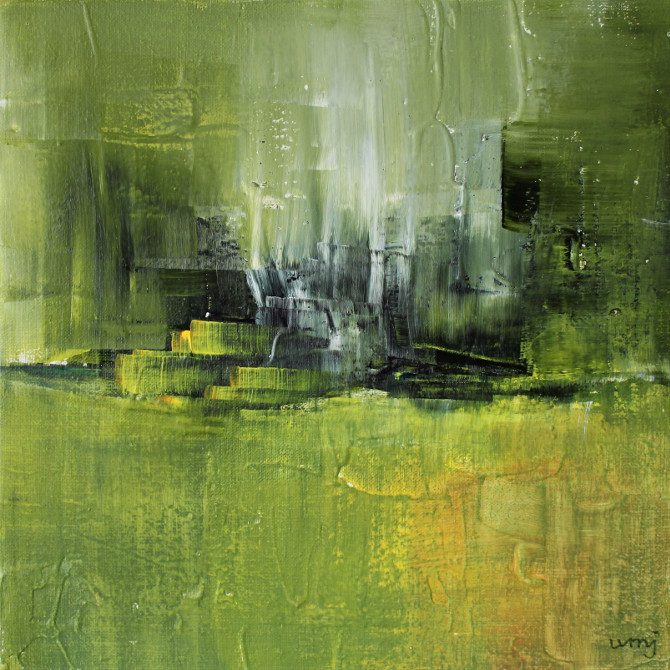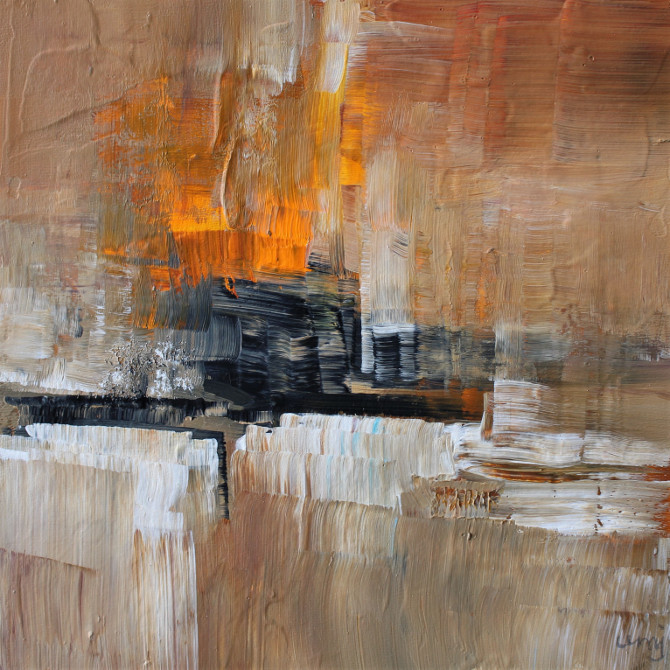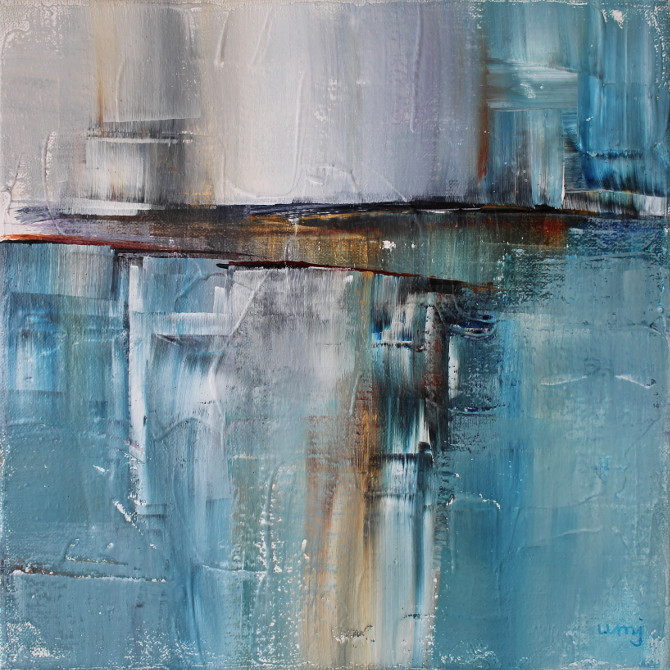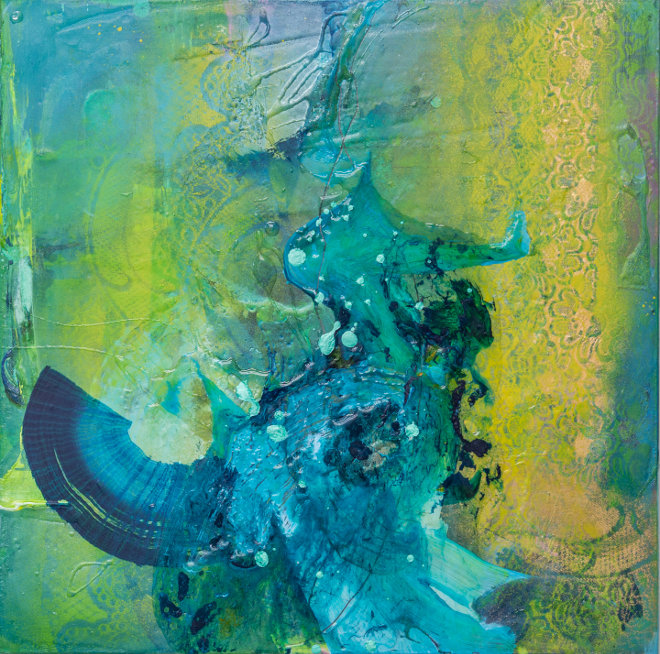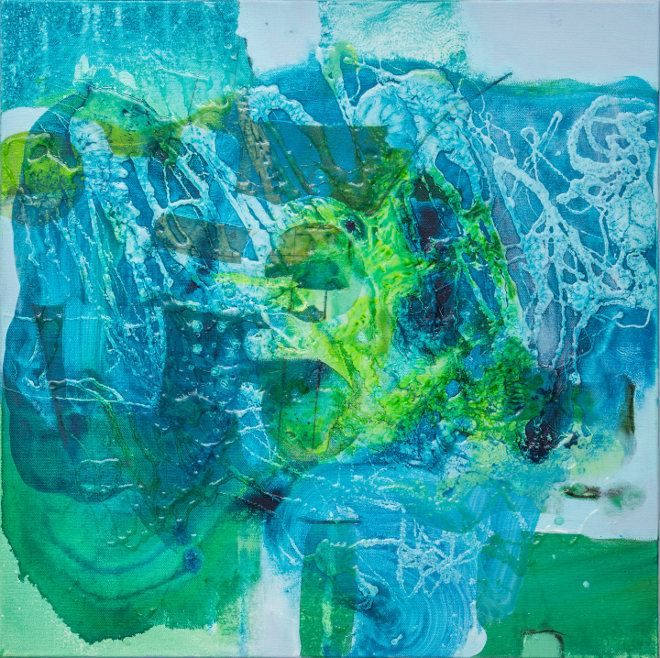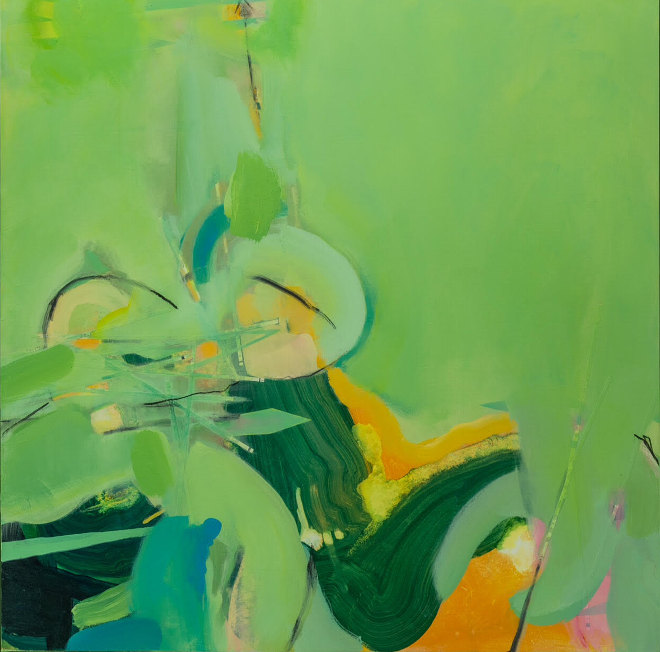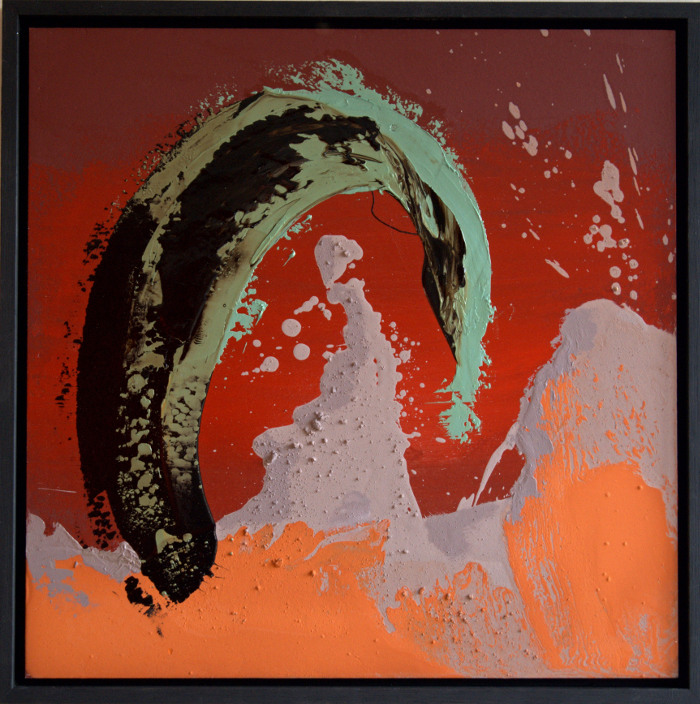
Leaping Through The Dragon’s Gate by Nigel Shipley
“In a world of hard-edged technology, expressionist painting connect us with the human hand and emotions,” says artist Nigel Shipley. “My abstract paintings don’t represent things that already exists, but do have connections with the real world.”
The title of Nigel’s latest exhibition, Wine Gums and Moonbeams, sums up this ethos with mouth-watering immediacy. One is tangibly flavoursome, drumming up the inimitable sensation of a mouth full of colourful sweets (especially vivid thanks to their childhood connotations), while the other shivers with impressions of ethereal beauty, other-worldliness, potential romance and possible danger. In other words, they’re each jam-packed with suggestiveness. His work is deliciously evocative and playful.
Following on from my 2018 interview with Nigel, the artist has continued to experiment with abstract painting, finding new routes to capturing the images he envisions. “In many of my recent painting I have used bitumen paint, which is made to repair leaking roofs,” he says, “It is dreadful stuff to work with, sticky, stinking and as black as can be. It is like the dregs of a barrel of crude oil, but when dried on a painting it can be a sublime, rich, and deep black. It’s pure black like Japanese lacquer, but with a velvety softness.”
Nigel has fully immersed himself in investigating the behaviour and effects of this medium. “Oil paint applied in a thin wash over a pure white base acts like a sheet of coloured glass through which light passes and reflects back off the white base. This can illuminate the colour from behind and make it glow, contrasting vividly with the dark bitumen. The black has a dramatic effect on a thin wash next to it.”
Other materials also come into play. “I can make a simple mould out of clay and melt metal to cast silvery pieces to embed into bitumen – the black and silver challenge each other like yin and yang.”
Nigel’s influences inform his trial-and-error process. “The emotional rawness of Abstract Expressionists attracts me, as does the composition of Japanese prints and the light and movement of Renaissance painting. Like Japanese lacquer, bitumen paint gives a sublime, rich, deep black which I contrast with thin transparent misty washes of paint. It creates a hint of a landscape with objects floating in space give a suggestion of surrealism.”
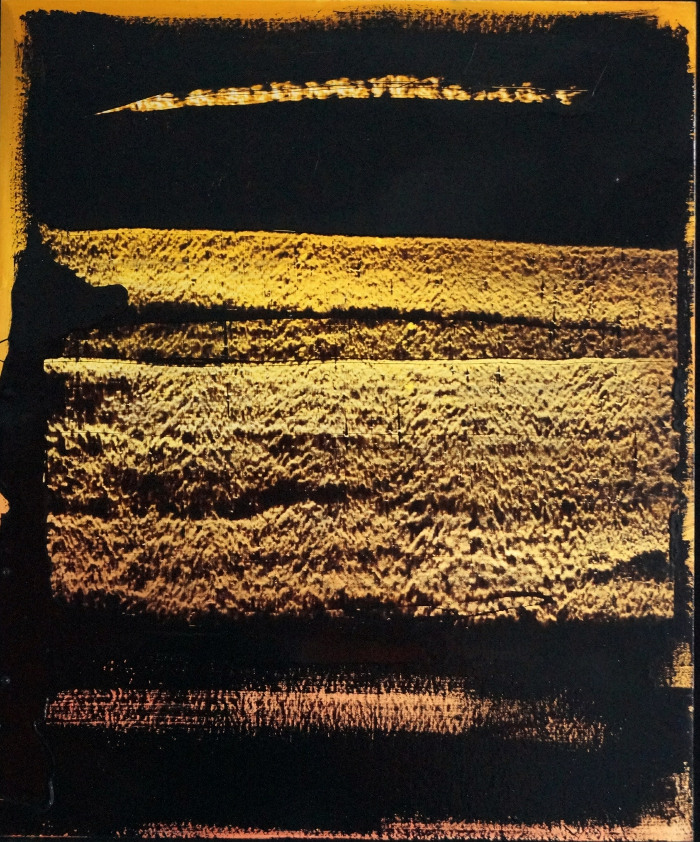
Interference by Nigel Shipley
The result is a glorious visually tactile series of paintings brimming with emotion yet utterly open to interpretation.
Nigel is an ardent fan of what he terms controlled accidents. “By painting a thin wash of oil paint over a white base of water based acrylic paint, the oil and the water may react and create natural patterns that reflect those in nature,” he says. “These patterns can have an infinite complexity that it would be impossible to design, and mirror the patterns found when frost settles on an icy winter’s window, or the cracks of a dry muddy river bed. Scraping wet paint with a squeegee can create similar accidental textures or rhythms that reflect nature.”
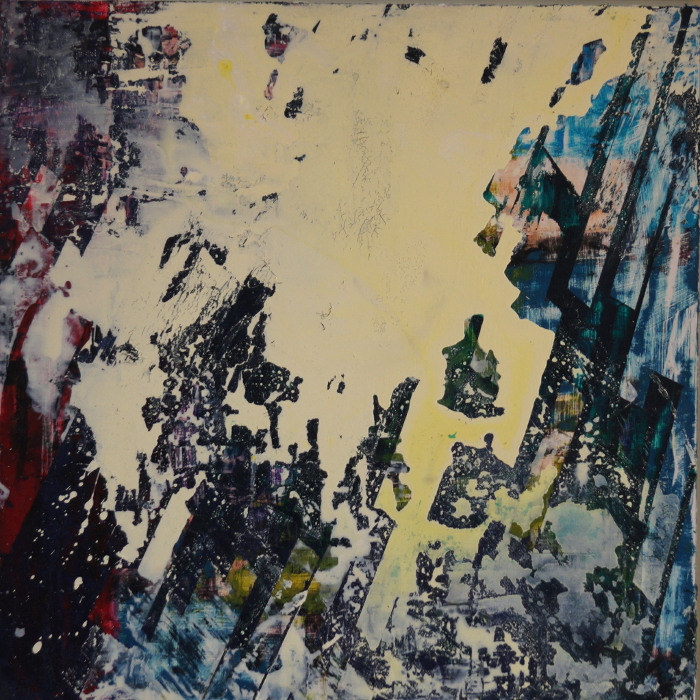
In The Beginning by Nigel Shipley
His approach is purely based on intuition and curiosity, which contributes to the originality of the finished pieces.
“My method of working is to follow my instincts and not to try to communicate an idea about a social issue but to celebrate beauty,” he explains. “I work on many paintings at a time. I make marks, leave the paint to dry and then come back to look at it afresh before deciding what I feel to be the correct next move. At some point I either decide that it’s finished or throw it away as a painting that didn’t work but from which I learnt something.”
Wine gums and moonbeams will be on at The Hours, Colston Yard, Bristol, BS1 5BD, from 4th-31st October. Viewings by arrangement. For details, visit www.nigelshipley.com
Are you an artist or do you know an artist who would like to be showcased on SkyLightRain.com? Get in touch at judydarley (at) iCloud.com. I’m also happy to receive reviews of books, exhibitions, theatre and film. To submit or suggest a review, please send an email to judydarley (at) iCloud.com.

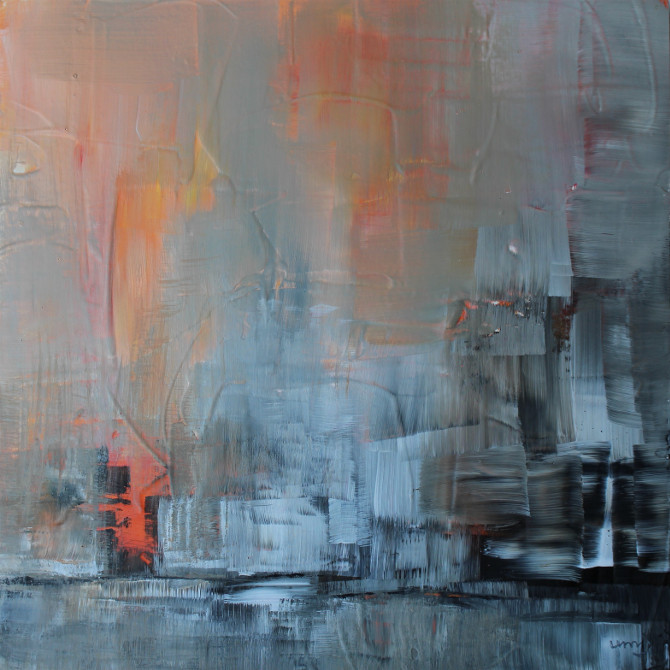 In 2014, artist Ulla Maria Johanson set herself the challenge of creating and completing a new painting every day. It marked the start of a period of intense productivity that has resulted in a series of exquisite work by the Swedish artist.
In 2014, artist Ulla Maria Johanson set herself the challenge of creating and completing a new painting every day. It marked the start of a period of intense productivity that has resulted in a series of exquisite work by the Swedish artist.